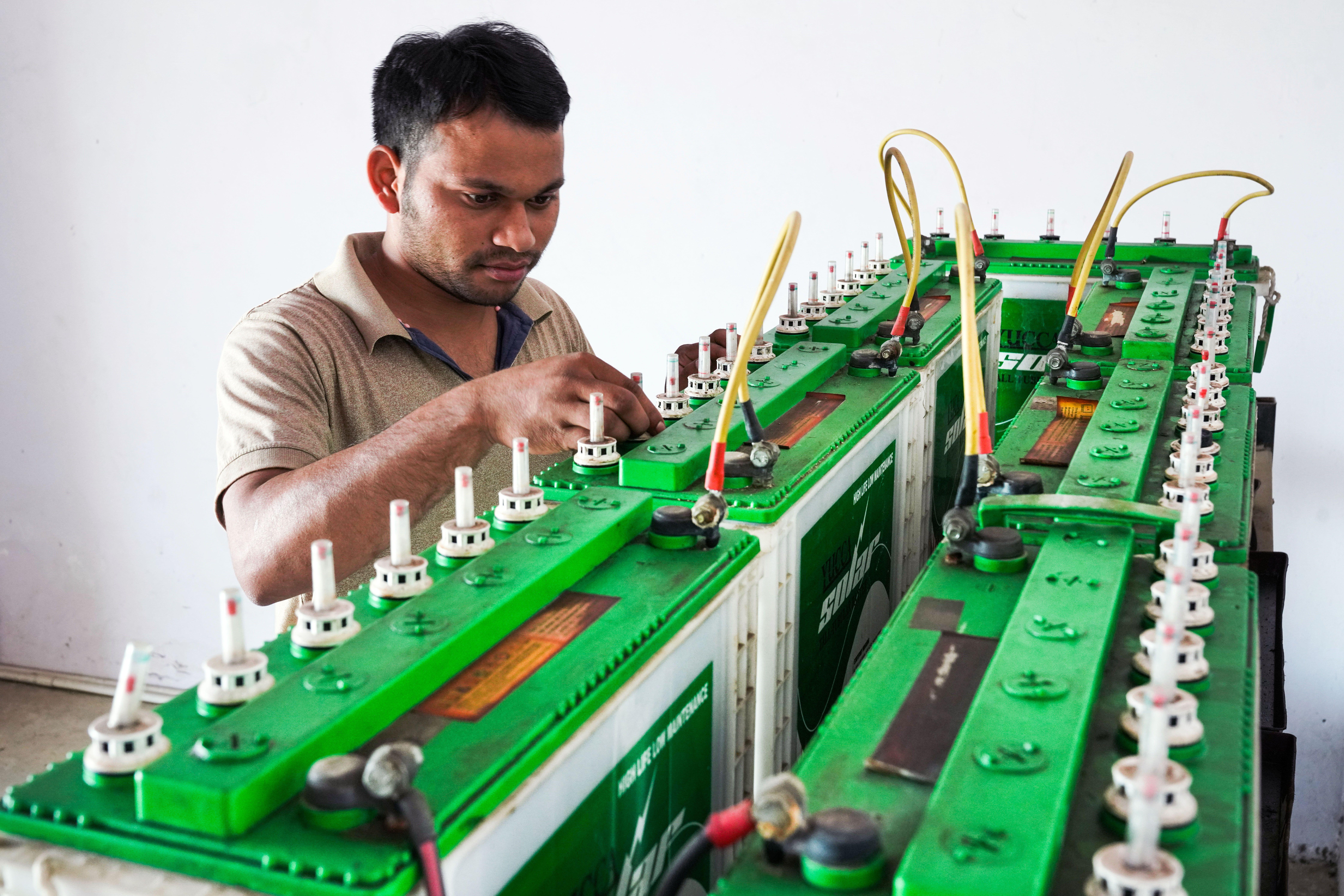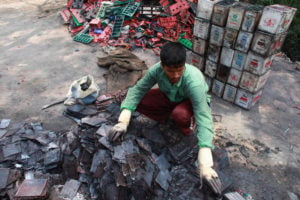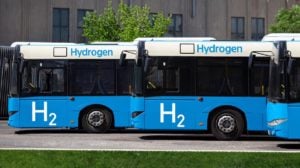Batteries are ubiquitous in our everyday lives, powering a wide range of common items, from toys to cars. But large-scale batteries have an increasingly important role to play in providing reliable electric power from renewable sources, and helping India and other countries move away from reliance on fossil fuels.
• What is battery storage?
• Why are batteries important for India’s energy transition?
• What role do batteries currently play in powering India’s energy grid?
• How much battery capacity does India need to achieve its energy transition goals?
• How will India increase use of batteries on its power grid?
• What are the challenges to battery adoption in India?
• Who are the global leaders in battery production?
• What is the difference between large scale battery storage and small batteries developed for electric vehicles?
• What materials are needed to produce batteries?
What is battery storage?
Battery storage is a technology used to store energy and release it at the right time and in the right amount when consumers need it. Today, engineers are working on large-scale batteries that can be integrated into the power grid to store energy from clean sources like solar or wind. Battery powered cars and scooters are also becoming increasingly popular in India, as a way of reducing both carbon emissions and air pollution in cities.
Why are batteries important for India’s energy transition?
Batteries are essential for an energy grid powered by renewable energy. This is because many renewable energy sources need certain conditions to produce power – a solar panel will generate electricity only when the sun is shining, and a wind turbine needs strong winds to operate. Renewable energy sources may also produce lots of electricity when demand is low, for example during the day when there’s less need for electricity to power lights at home.
Batteries allow this excess energy to be stored and released onto the grid at the right time, when consumers need it. This is called battery-based energy storage (BBES).
Traditionally, grid operators in India have relied on coal – the most polluting fossil fuel – which can be burned to dispatch the exact amount of electricity needed at a given time. Using batteries to store energy produced from renewables like wind and solar can recreate this ability to balance supply and demand on the grid, removing a major barrier to moving away from fossil fuels.
What role do batteries currently play in powering India’s energy grid?
India’s current grid-connected battery storage capacity is essentially negligible. Installation of battery-based electricity storage has so far been limited to small-scale projects.
India’s first grid-scale battery storage system – a 10 MW system in Delhi – was launched in 2019. Then in 2021, a 150 KW battery installation in Delhi was hailed as “India’s first grid-connected community energy storage system”.
How much battery capacity does India need to achieve its energy transition goals?
At the start of COP26 in Glasgow in November 2021, India’s Prime Minister Narendra Modi pledged to increase India’s energy production capacity from non-fossil fuels to 500 gigawatts (GW) by 2030. This would be a significant increase from around 160 GW today.
Modelling by India’s Central Electricity Authority (CEA) concluded that to support the deployment and integration of 500 GW of non-fossil fuel energy capacity, 27 GW or 108 gigawatt-hours (GWh) of battery capacity will be needed in India by the year 2029-2030. A gigawatt-hour is a measure of how much power can be released in a certain amount of time, whereas a gigawatt is a measure of how much power can be produced at a peak time.
How will India increase use of batteries on its power grid?
India is planning to ramp up battery production to support its decarbonisation goals. The government has rolled out a Production Linked Incentive (PLI) scheme which rewards local manufacturers for growing battery sales. It hopes to achieve 50 GWh of cumulative battery capacity within the next few years. However, this is still a long way away from what India needs to support its energy transition targets.
What are the challenges to battery adoption in India?
India is yet to develop manufacturing of batteries at the scale that would be used by the grid.
Battery prices have decreased significantly over the past few years, but they remain too high to be deployed at the scale required for India’s energy transition. Currently, an average battery pack to fit on an electric car would cost between USD 7,000 and 10,000 in India. Experts expect them to become cheaper within the next four years.

Who are the global leaders in battery production?
China currently dominates global battery production, with 558 GWh of battery capacity manufactured in 2021, followed by the US, Hungary and Poland with 44, 28 and 22 GWh respectively.
What is the difference between large scale battery storage and small batteries developed for electric vehicles?
Currently, demand for small vehicle batteries is ten times higher than that for large scale batteries for the power sector. The technology currently in use is the same, although a battery designed for cars and one meant to store power for the grid would ideally need a different energy to power ratio (the amount of energy the battery can discharge in a certain amount of time). Despite these differences, engineers say that as demand for electric cars expands, prices will decrease and eventually this will benefit the power sector too.
What materials are needed to produce batteries?
The key minerals used to build batteries by current technologies are lithium, nickel, cobalt, manganese, graphite, iron, and titanium. As the battery industry grows, a small group of countries with significant mineral reserves controls the global supply chains. In 2020, Australia produced nearly half of the world’s lithium, while Bolivia, Chile, Argentina and Afghanistan have the largest estimated deposits. Half of the world’s resources of cobalt are located in the Democratic Republic of Congo, which accounts for 70% of the mineral’s global production.
Scientists are now exploring alternative battery materials such as salt, magnesium, iron and even seawater.









